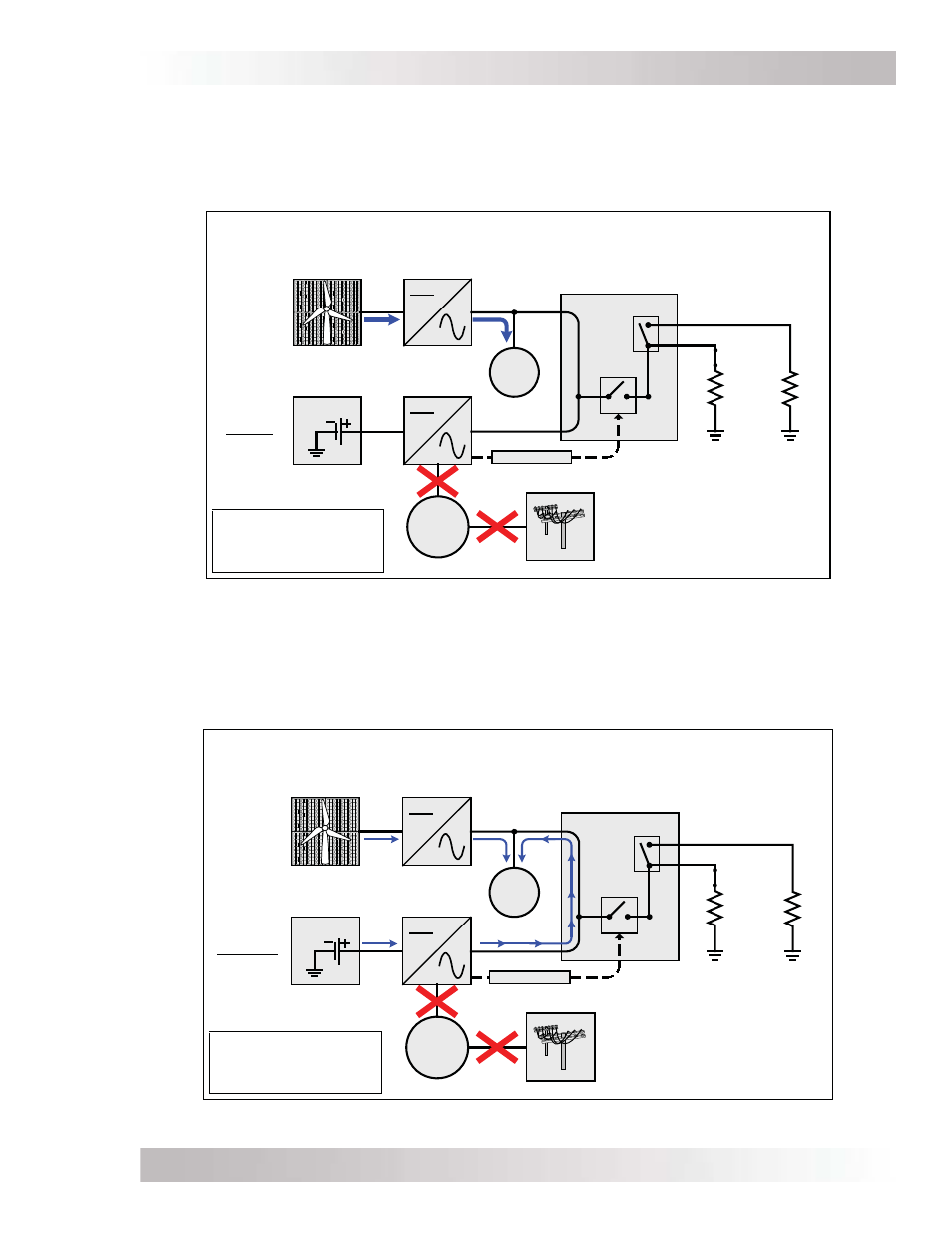Magnum Energy AC Load Diversion Controller (ACLD-40) User Manual
Page 34

Page 27
©
2015 Sensata Technologies
Operation
3.4 Power Flow Scenarios - Utility Not Connected
Whenever there is a utility power outage, the MS-PAE Series inverter automatically comes on to
start powering the critical loads. Since the grid-tie inverter is connected to the output of the MS-
PAE Series inverter, the grid-tie inverter reconnects and starts converting the renewable energy
to power the critical loads (see Figure 3-4).
Grid-Tie
Inverter
ACLD Controller
(Standby)
Renewable
Energy
MS-PAE Series
Inverter
Battery
Bank
Battery
Nominal
Critical
Loads
Utility Not Connected – RE Powers Critical Loads
(Critical loads consume all the Renewable Energy)
Note: When the utility power is lost
and the MS-PAE Series inverter is
inverting, the ACLD is in Standby
mode and ready to regulate the
charge current to the battery.
Main
Household
Loads
Utility
Grid Power
Secondary
Load
(Not Powered)
Primary
Load
(Not Powered)
Relay
PWM
Switch
MagNet Control
Figure 3-4, Utility not Connected - RE Powers Critical Loads
Relay
PWM
Switch
Grid-Tie
Inverter
ACLD Controller
(Standby)
Renewable
Energy
MS-PAE Series
Inverter
Battery
Bank
Battery
Decreasing
Critical
Loads
Utility Not Connected – Additional Power Provided to Critical Loads
(Power to critical loads greater than available from the Renewable Energy)
Main
Household
Loads
Utility
Grid Power
Secondary
Load
(Not Powered)
Primary
Load
(Not Powered)
MagNet Control
Note: When the utility power is lost
and the MS-PAE Series inverter is
inverting, the ACLD is in Standby
mode and ready to regulate the
charge current to the battery.
Figure 3-5, Utility not Connected - Additional Power Provided to Critical Loads
During occasions when the renewable energy is less than the power required by the critical loads
(i.e., PV system at night), the additional power is provided by the MS-PAE Series inverter using
power from the battery bank (see Figure 3-5).
